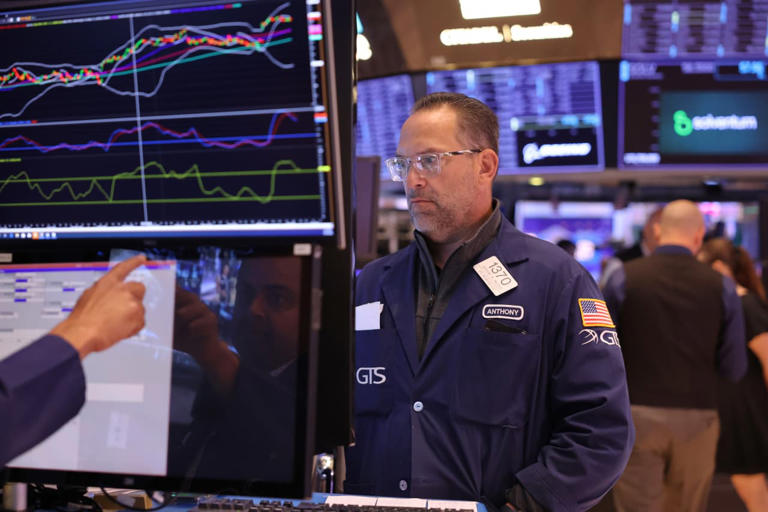Over the past six months, the stock market has seen a significant shift in investor behavior, leading to a substantial rise in the valuation of the S&P 500. Investors are now willing to pay 20.57 times the projected earnings per share (EPS) of the S&P 500 for the next year, which marks a 3.4 point increase from the market’s low in October. This rapid increase in the price-to-earnings (P/E) ratio is quite rare, occurring only 5% of the time over the last three decades, as noted by renowned strategist David Rosenberg.
Several factors contribute to this surge in market valuations, with liquidity being a primary driver. There is a significant amount of money available for investment, which has been pushing up valuations. Money-market funds, which reached a total of $6 trillion for the first time in February, are one of the key indicators of this liquidity. The latest value as of the week ending May 29 remains above this record. Other liquidity indicators, such as the Federal Reserve’s overnight reverse repurchase facility—where institutions park excess cash to earn interest—are at $440 billion. Additionally, the M2 money supply, a broad measure of money in the economy, is currently around $21 trillion.
This abundance of liquidity suggests that there is plenty of money ready to be invested in the stock market. This can create a feedback loop where more money flowing into equities drives up prices, attracting even more investment. The availability of excess cash also allows investors to take on more risk, contributing to higher valuations.
A significant portion of the S&P 500’s increased valuation can be attributed to the tech sector, particularly companies involved in artificial intelligence (AI). The so-called Magnificent Seven stocks—Nvidia, Apple, Amazon, Microsoft, Google parent Alphabet, Tesla, and Meta Platforms—are trading at a P/E ratio of 30.71 times their projected earnings over the next 12 months. This is a substantial increase from their October lows and well above their 10-year average. The surge in these tech stocks has played a major role in driving up the overall valuation of the S&P 500.
However, a different picture emerges when looking at the S&P 500 Equal-weight index, which assigns equal importance to each stock in the index. As of the latest data, this index is trading at 16.31 times its projected earnings for the next 12 months. While this is an increase from its October levels, it is in line with the 10-year average, indicating a more normalized valuation across a broader range of companies. This suggests that while tech stocks have significantly inflated the S&P 500’s valuation, the broader market is more reasonably valued.
Investor behavior and market momentum also play crucial roles in sustaining high valuations. The stock market’s strong performance, with the S&P 500 closing at record levels 24 times in the first half of the year, creates a sense of exuberance. Investors are reluctant to sell in a rising market, which means buyers must pay increasingly higher prices to attract sellers. This momentum-driven behavior can keep valuations elevated beyond what economic fundamentals might justify.
Despite the market’s bullish sentiment, some experts caution that the current high valuations may not be sustainable. There is concern that the stock market is driven more by sentiment and speculation rather than economic fundamentals. David Rosenberg, referencing economist Alan Greenspan’s concept of “irrational exuberance,” argues that the market’s behavior reflects irrationalism rather than a sound economic backdrop.
If inflation rises too high or if the earnings from the tech companies, particularly those involved in AI, do not meet lofty expectations, the market could face a significant correction. This potential for overvaluation and the associated risks means that while the market is currently buoyant, it may be vulnerable to a downturn.
Overall, the stock market’s recent surge in valuations is driven by an abundance of liquidity and strong performance in the tech sector, particularly AI-related stocks. However, the broader market shows signs of more reasonable valuations, and caution is warranted due to the potential for overvaluation and the risks of a market correction.
